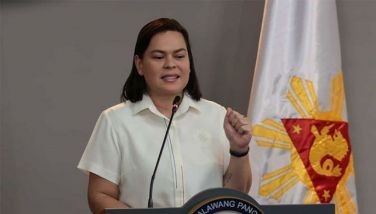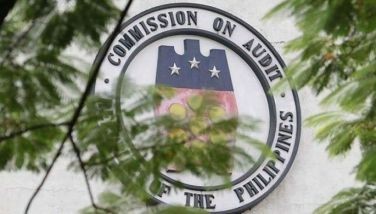DENR crooks, local executives leave watersheds unprotected

Senators uncovered a racket while investigating recently a cult in the mountains of Surigao. It turns out that the Department of Environment and Natural Resources has been giving away forestlands to bogus indigents.
Since 2004 Socorro Bayanihan Services Incorporated has enjoyed a Protected Area Community-Based Resource Management Agreement. DENR issues 25-year PACBRMAs to those who have been deriving livelihoods from protected areas for at least five years.
But since 2019 SBSI was found to have illegally erected structures within its 353-hectare PACBRMA. Those include huge chapels, dorms and canteens. Heavily armed militia patrol roads and fences. Minors are abused, female members forced into marriages, government employees made to leave their jobs.
SBSI may be an odd example. But how many other would-be needy groups did DENR favor with PACBRMAs? Strange that its website contains no number of PACBRMAs granted under the 1992 National Integrated Protected Areas System Act. Insiders whisper that hundreds of PACBRMAs cover thousands of hectares of forestlands.
In Rizal province, Masungi Georeserve Foundation cries that DENR has parceled off tracts of Upper Marikina River Basin Protected Landscape. At least 30 syndicates benefited, Masungi president Ben Dumaliang researched. DENR not only ignores but even wants to expel his reforestation group.
Agusan tribesmen also gripe that armed lowlanders have invaded their ancestral lands. Agro-industrial projects have displaced them.
Elsewhere, upland farming destroys forests. Rivers are choked. Coastal areas below are polluted. Watersheds disappear, UP-Los Baños climate change scientist Prof. Rex Victor Cruz shakes his head.
* * *
A watershed consists not only of the mountaintop forest or ridge, Cruz explains. It is an ecosystem that includes the up-, mid- and downstreams, all the way to coastal areas.
A top view will show that watersheds cover the entire archipelago, Cruz says. The environmental reserves have been mapped.
The largest watershed is Cagayan River Basin, a tenth of the Philippine land area. It covers the Northern Sierra Madre, Cordillera and Caraballo ranges plus the fertile valleys in between. Only 30 percent of the forest cover remains. And that’s the best in Philippine record.
Other major watersheds are Mindanao River Basin; Agno River Basin in Cordillera; Pampanga Basin, Bicol Basin, Jalaur in Iloilo, Hilabangan in Negros Island. The Upper Marikina Watershed is part of the grander Pasig-Laguna de Bay Basin. That’s why Laguna Lake Development Authority oversees Metro Manila, Rizal, Laguna, Batangas, Cavite and Quezon.
Practically all Filipinos have a watershed address, Cruz says.
Weathermen predict extreme El Niño this first half of 2024. Expect no trickles of water from upland forests down rivers to farmlands. That’s in contrast to destructive floods in the past four years.
If protected, watersheds can support springs and irrigation year round. There can be waterflow even in summer and during El Niño, though not as much as usual.
Watersheds also prevent floods during storms and typhoons. Trees prevent rains from cascading.
* * *
DENR and local government units need to partner in protecting watersheds.
Problem is that DENR seems to think that its mandate is to give away and not preserve natural resources, Masungi’s Dumaliang says. For their part, LGUs are not accountable for watershed damage, Cruz adds: “Have you heard of any province or municipality that was made to answer?”
DENR and LGUs are even in cahoots. Proof, Dumaliang cites, are two dozen swimming pool resorts in the Upper Marikina Watershed. DENR says those are illegal but lets them be. LGUs grant them permits and assign police protection.
In October 2023 DENR and Rizal province launched Project TRANSFORM, or Transdisciplinary Approach for Resilience and Environmental Sustainability through Multi-stakeholder Engagement. The highest DENR officers were there, along with big business execs and miners.
Excluded were environmentalists and reps of indigenous peoples. No wonder they call it greenwashing. “How can you dub this initiative as pro-environment when a signatory is the owner of the quarry company that wants to level mountains and claim the forest in the protected area of Upper Marikina Watershed?” says UMW Coalition secretary Anna Reyes.
* * *
Catch Sapol radio show, Saturdays, 8 to 10 a.m., dwIZ (882-AM).
Follow me on Facebook: https://tinyurl.com/Jarius-Bondoc
- Latest
- Trending


























